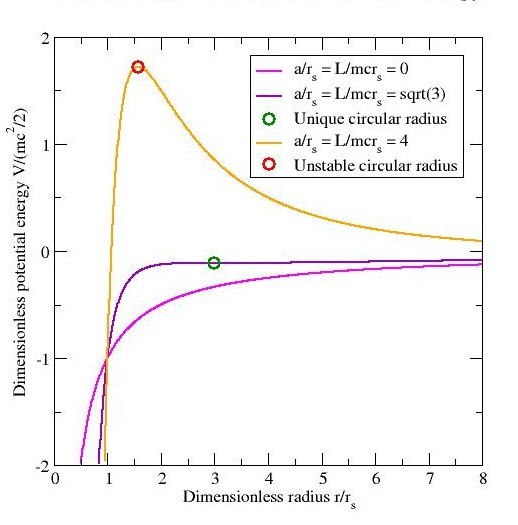Unveiling the Unseen: Journey into the Therapeutic Depths of Foam Rolling
In a world where muscles serve as the unsung heroes supporting our every physical endeavor, their health and well-being often remain shrouded in mystery. Meet foam rolling, the enchanting self-myofascial release technique that unravels the secrets hidden within our muscular system, offering a therapeutic journey like no other. With a neutral tone that empowers you to take control of your muscle health, we’ll embark together on a quest to delve deep into this mystical practice. So, prepare to unlock the hidden potentials of your muscles as we navigate the extraordinary world of foam rolling.
The Benefits of Foam Rolling: Why Self-Myofascial Release Matters
When it comes to taking care of our bodies, self-myofascial release through foam rolling has increasingly gained popularity. This simple yet effective technique involves using a foam roller to apply pressure to different areas of the body, targeting tight muscles and fascia. Not only does regular foam rolling alleviate muscle tightness and soreness, but it also provides a multitude of other benefits that contribute to overall well-being.
Improved Flexibility and Range of Motion:
By utilizing a foam roller, you can effectively increase your flexibility and improve your range of motion. Foam rolling allows for myofascial release, which breaks up knots and adhesions in muscles. As a result, muscles become more supple and pliable, allowing for greater mobility. So whether you’re an athlete looking to enhance performance or an individual seeking better day-to-day movement, foam rolling can be a game-changer.
Enhanced Muscle Recovery:
After an intense workout or physical activity, muscle soreness can leave you feeling stiff and unable to move comfortably. Foam rolling stimulates blood flow to the muscles, which speeds up the recovery process and promotes the removal of metabolic waste. This helps reduce inflammation and aids in faster healing, ensuring that you bounce back quicker from strenuous activities.
Injury Prevention:
Prevention is always better than cure, and foam rolling plays a crucial role in helping prevent injuries. By regularly engaging in self-myofascial release, you can identify areas of muscle imbalance or weakness. Targeting these areas with your foam roller allows you to release tension, improve muscular balance, and reduce the risk of potential injuries. Incorporating foam rolling into your fitness regimen can provide a solid foundation for injury-free, efficient training.

Understanding Myofascial Release: A Closer Look at the Fascia and Muscle Health
When it comes to optimizing our muscle health, it’s essential to explore all aspects of our body’s intricate system. One often underestimated component is the fascia, a web-like connective tissue that surrounds and supports our muscles. Fascia plays a vital role in maintaining muscle health and overall well-being.
The Fascia: A Marvel of Connectivity
The fascia is an interconnected network of collagen fibers that runs throughout our entire body, linking muscles, bones, tendons, and organs. Think of it as a seamless garment that envelops and holds our tissues together, providing structural support and stability. The fascial system acts as a communication highway, ensuring proper coordination between various bodily structures, thus influencing our overall movement and posture.
Myofascial Release: Unleashing the Potential
Myofascial release is a therapeutic technique aimed at addressing restrictions or imbalances within the fascial system. By applying gentle, sustained pressure and stretching, myofascial release allows the fascia to release tension and adhesions, promoting flexibility and restoring optimal muscle function.
Benefits of Myofascial Release
- Improved posture: By releasing tension in the fascia, myofascial release helps realign the body, alleviating strain on muscles and joints, and improving overall posture.
- Pain relief: Myofascial release can alleviate chronic pain conditions, such as fibromyalgia or tension headaches, by reducing muscle tightness and promoting relaxation.
- Enhanced performance: By optimizing muscle function and range of motion, myofascial release can help athletes improve their performance and prevent injuries.
- Stress reduction: As the fascia relaxes, so does the body and mind, leading to a profound sense of relaxation and stress relief.
Understanding the crucial role of fascia and the benefits of myofascial release is key to unlocking a healthier, more balanced body. Incorporating this technique into your wellness routine can lead to improved muscle health, increased range of motion, and a greater overall sense of well-being.

Foam Rolling Techniques: Step-by-Step Guide for Optimal Muscle Recovery
Are you constantly plagued by sore muscles and looking for effective ways to speed up your recovery? Look no further than foam rolling techniques! Foam rolling is a popular and incredibly beneficial method for enhancing muscle recovery and reducing post-workout discomfort. Here, we present a step-by-step guide to help you unlock the power of foam rolling and promote optimal muscle healing.
1. Choose the Right Foam Roller: Start by selecting a foam roller that suits your needs. There are various types available, such as smooth-surfaced, textured, or hollowed-out foam rollers. Consider your comfort level and the area you want to target before making a choice.
2. Warm-up the Muscles: Before diving into foam rolling, it’s essential to warm up your muscles. Engage in five to ten minutes of light aerobic activity, such as jogging or jumping jacks, to increase blood flow and prepare your muscles for the upcoming session.
3. Focus on Problem Areas: Identify the areas of your body that require extra attention and concentrate on rolling those regions. Apply moderate pressure and slowly roll back and forth along the muscle, pausing for a few seconds at any tight spots. This helps to break up muscle knots and adhesions, promoting flexibility and range of motion.
4. Breathe and Relax: As you foam roll, remember to breathe deeply and try to relax your muscles. Emphasize slow, controlled movements rather than rushing through each roll. This technique allows your muscles to adapt and recover more effectively.
By incorporating foam rolling techniques into your post-workout routine, you can speed up your muscle recovery, reduce muscle soreness, and promote overall muscle health. Remember to listen to your body and adjust the pressure as needed. So, wave goodbye to muscle fatigue and embrace a more efficient way of taking care of your muscles with foam rolling!

Targeted Foam Rolling: Customizing Self-Myofascial Release for Different Muscles
Foam rolling has revolutionized the way we recover and improve mobility. Whether you’re an athlete or someone who simply wants to alleviate muscle tightness, foam rolling can be a game-changer. But did you know that you can take your foam rolling routine to the next level by targeting specific muscle groups? Customizing self-myofascial release for different muscles can provide even greater benefits. Here’s how you can do it:
1. Identify your trouble spots:
Every individual has unique areas of tension and tightness in their muscles. Take some time to assess your body and identify the specific muscles that need extra attention. It could be your tight calves, hunched shoulders, or a tight iliotibial (IT) band. By knowing your trouble spots, you can tailor your foam rolling routine accordingly.
2. Select the right tool:
Not all foam rollers are created equal. Different muscle groups require different levels of pressure and density. Opt for a foam roller with varying textures or a set of different rollers to effectively target specific muscles. For example, a smooth foam roller works well for larger muscle groups like the quads and hamstrings, while a textured roller is great for digging into smaller muscle groups, such as the calves or forearms.
3. Use targeted techniques:
Once you’ve identified your trouble spots and chosen the appropriate foam roller, it’s time to get rolling! Instead of a generalized rolling routine, focus on techniques that directly address your specific muscles. For instance, if you’re targeting your calves, a technique like “pin and stretch” can help by applying pressure on the tense muscle and then extending the leg to stretch it. Experiment with different movements and angles to find what works best for you.
By customizing your self-myofascial release routine, you can effectively address your specific muscle imbalances and tightness. Remember to listen to your body and seek professional advice if needed. So grab your foam roller, target those trouble spots, and enjoy the benefits of a personalized foam rolling experience!

Tips for Effective Foam Rolling: Recommendations to Maximize Muscle Health
Foam rolling is a fantastic way to enhance muscle health and improve overall athletic performance. With its ability to release muscle tension and increase flexibility, incorporating foam rolling into your fitness routine can provide numerous benefits. Here are some valuable tips to optimize the effectiveness of your foam rolling sessions:
- Select the Right Foam Roller: When choosing a foam roller, consider its density and texture. Softer foam rollers are suitable for beginners or individuals with sensitive muscles, while firmer ones offer deeper tissue massage. Experiment with different textures to determine what works best for your body.
- Warm-Up Before Rolling: It’s crucial to warm up your muscles before starting a foam rolling session. Take some time to engage in light cardio exercises or dynamic stretches to increase blood flow and prepare your muscles for the rolling process.
- Focus on Problem Areas: We all have certain muscle groups that require more attention than others. Identify your problem areas and spend extra time rolling those specific regions. Slowly roll back and forth, allowing the roller to target any knots or tight spots.
- Apply Gentle Pressure: While foam rolling, it’s essential to apply gentle pressure and avoid excessive force. Overly aggressive rolling can cause muscle soreness or injury. Gradually increase the pressure with each session as your muscles adapt and become more resilient.
Implementing these tips will help you maximize the benefits of foam rolling while minimizing the risk of injury. As with any new exercise routine, it’s always advisable to consult with a qualified fitness professional before incorporating foam rolling into your fitness regimen.
To Wrap It Up
In the world of fitness and wellness, there is an endless array of techniques and tools available to help us maintain optimal muscle health. Among these, foam rolling has emerged as a revolutionary practice that can truly transform the way we care for our bodies.
As we’ve explored in this article, foam rolling, also known as self-myofascial release, offers a unique approach to enhancing muscle function and relieving tension. Through the gentle pressure applied to our muscles, fascia, and connective tissues, we can unlock a multitude of benefits, from improved flexibility and range of motion to increased blood flow and reduced post-workout soreness.
But the value of foam rolling extends far beyond its physical advantages. It provides us with a moment of introspection, an opportunity to connect with our bodies on a deeper level. As we roll over each muscle group, we become attuned to the intricacies of our own physique, learning to identify areas of tightness and discomfort that often go unnoticed in the hustle and bustle of everyday life.
In this journey of self-discovery and self-care, we may encounter moments of discomfort, as knots and trigger points are released from our muscles. Yet, within the discomfort lies a sense of liberation, as we embrace the empowering notion that we possess the tools to heal and nurture ourselves.
So, dear reader, may this article serve as a guide on your path to achieving optimal muscle health through foam rolling. May you find solace in the soothing rhythm of each roll, and may you discover the transformative power that lies within your own touch. Embrace the foam roller as a loyal companion on your quest for physical and mental well-being.
As the foam roller becomes an indispensable part of your self-care routine, allow it to remind you of the infinite capacity that exists within your own body and spirit. Let it be a symbol of your commitment to nurturing yourself and honoring the vessel that carries you through this world.
As you embark on this new chapter of self-myofascial release, remember to approach each roll with intention, offering gratitude to your body for all it endures. And while the path may be dotted with challenges, have faith in the tremendous resilience and adaptability that lies within you.
So roll on, dear reader, and may you continue to explore the wonderful benefits of foam rolling, unlocking a realm of vitality, strength, and holistic well-being.




